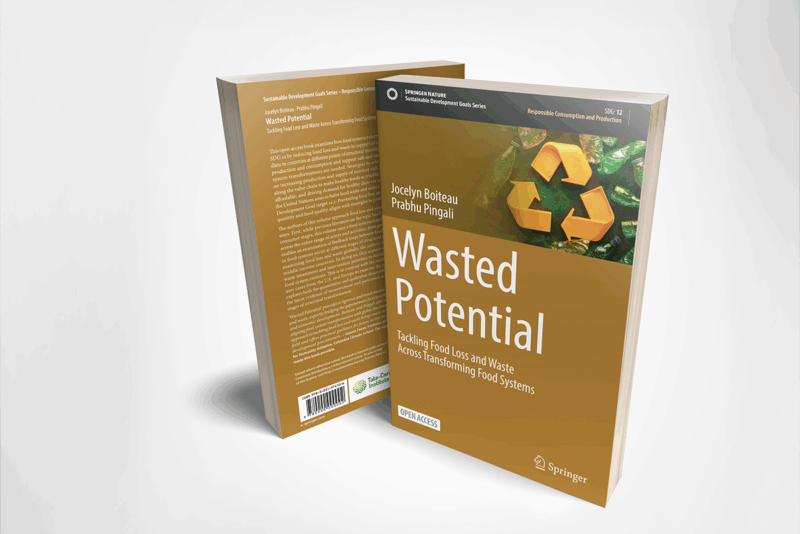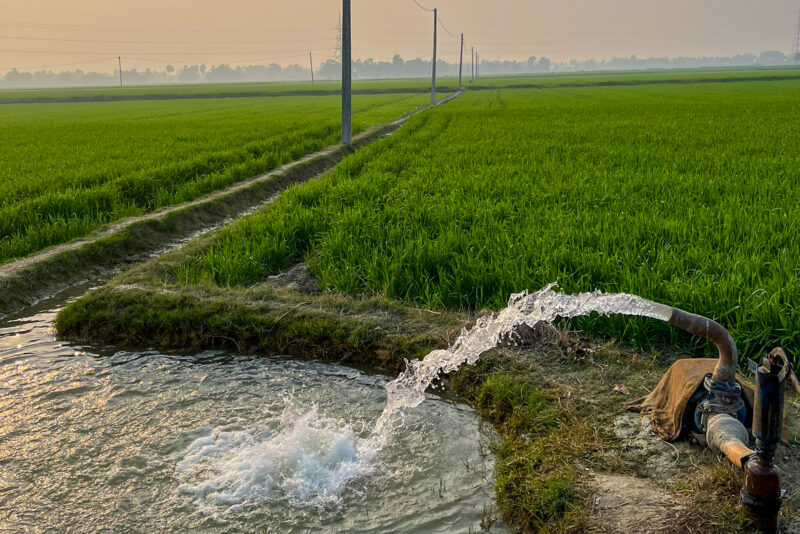Examining the Indian nutrition transition: Reducing the risks for obesity by 2050

In the last 20 years, undernutrition as measured by stunting and underweight has been decreasing for children under five in India, but the progress towards its complete elimination has been slow. In the NFHS 2015-16, 38% of all children remained stunted and 29% were underweight. At the same time, the NFHS 2015-16 shows that nearly 20% of the entire adult population in the country has become at risk of obesity and non-communicable diseases (NCDs). In 2017, nearly 62% of all deaths in the country were due to NCDs. This slow reduction in underweight individuals has not kept pace with rising per capita incomes while the unprecedented increase in overweight individuals has outpaced economic growth rates. How do we explain this?
Some of the key attributes of the nutrition transition in India are explored and explained in the book Transforming Food Systems for a Rising India (Chapter 5). We find:
- The lack of dietary diversity in both poor and rich households is a key cause for the high undernutrition rates as well as rising obesity (in both contexts).
- Income insecurity of households continues to increase household’s vulnerability to undernutrition. Even though obesity is currently associated with greater incomes per capita and urbanization, experience from other developed countries forewarns us that obesity can morph into a malnutrition burden of lower socioeconomic status as well.
- Lack of knowledge on health and diets, too, is a major driver of nutrition access.
Within households, nutrition behaviors and choices can affect who eats what and how much is eaten by each family member as well. Intrahousehold food allocation is not always equitable. In fact, structural discrimination, market failures and cultural misconceptions towards women’s worth and health often increases their risk for malnutrition. This disadvantage is passed on inter-generationally as poor, vulnerable and less educated women do not have the means necessary to ensure their children have better health or nutrition.
With limited means and status, women have limited options to provide diverse, quality diets opting instead for foods that they can afford, like cheap packaged noodles or grain-heavy monochromatic, meat non-existent diets. Much like food insecurity in the United States, when vegetables cost more than chips and bread, poor families rationally purchase what will feed the most people for the least money. Unfortunately, it is these very consumption behaviors that drive the obesity epidemic throughout the world and rural India is no exception. Unlike much of the world, however, rural Indians face environmental contamination at a relatively high degree – largely due to poor sanitation practices and high population density. This exposure (to fecal microbes and chemical and/or fungal toxins) affects nutrient absorption (particularly in children), thus increasing the vulnerability of these groups to malnutrition; it may also increase the risk of developing NCDs such as cancer.
Meanwhile, at the macro level, the specter of climate change hangs in the air. Indeed, the climate crisis is one of the largest threats to nutrition security for the future. By reducing food availability, access, affordability and stability, it threatens to impact nutrient availability (because increased carbon in the air decreases the nutrient uptake of the plants we consume, to name one example). In addition, climate change will impact nutrition outcomes if it leads to a deterioration of the health environment, such as the spread of disease vectors like malaria.

The nutrition transition from under-nutrition to obesity is happening now! In the decade spanning 2005-06 to 2015-16, there have been marked increase changes in the percent of overweight adults as well as decreases in underweight in women, men, and children. (Data: NFHS 2005-06 & 2015-16, Pingali et al 2019 Chapter 5) Since 2005—06, the percent of overweight men and women in the Indian population have increased from and 10 and 12% respectively to 20% of men and women as of 2015-16. Favorably, the proportion of underweight adults has decreased from 36% to 23% in women and 34% to 20% in men and 42.5% to 36% of population of young children. (Note: Overweight in adults is defined as BMI > 25.0 Underweight in adults is defined as BMI < 18.5 while in children under 5 it is measured as weight for age (WAZ-score.) (Data: NFHS 2005-06 & 2015-16, Pingali et al 2019 Chapter 5)
Reducing the risks for obesity and poor health
In response to the obesity epidemic, many countries have created smart, evidence-based public policies to deal with rising risk factors for NCDs while attempting to change behaviors & attitudes, skills & lifestyles, hearts & minds.
So how do we do that in India? A few places to start:
- Recognize that India is a huge, diverse and complex country. As much as it’s convenient and even typical to homogenize, it’s best to look at India by state (or at least as state typologies well defined in this book). Since the malnutrition risks vary from state to state – with more developed states facing a higher risk of poor health that is an outcome of obesity while less developed states are at greater risk from the outcomes of undernutrition – strategies must differ to adequately tackle to the issue(s) at hand.
- We call for a decentralized approach to policy making. In this future, states determine and address the most pressing challenges they are facing in their nutrition transition based on data and evidence. Then, to create pathways to reduce this nutrition burden, states identify the cost effective mechanisms and culturally/linguistically/locally appropriate messages as a runway for policy liftoff.
- Run information campaigns on the relationship between NCDs and obesity. This would include introducing laws to ensure greater nutrition labeling, taxing unhealthy foods, removing subsidies on calorie intensive foods such as rice and sugar, and introducing food grades and standards for quality control.
- Encourage private sector participation in increasing nutrition awareness and creating health infrastructure through public-private partnerships (PPPs). This not only frees up government resources for other preventive programs, it also would increase access to space for exercise such as building public parks, bicycle lanes & walkways, increasing neighborhood safety and strategies for reducing vehicular pollution will increase incentives for citizen to participate in improving their own health.
- Provide nutrition education in school and create a ‘culture of exercise’ to motivate the younger generation to invest in their health.
- Employ, educate and empower women, as reducing intra-household disparities is key to reducing malnutrition overall. Investment in women will cascade into better inter-generational nutritional outcomes and thus improve long-term health.
- Reduce risks for communicable diseases through by providing vaccines, deworming tablets, and anti-malarial bed nets. Building toilet and water infrastructure also has an important role to play.
- Improve access to dietary diversity in rural areas, by providing incentives to diversify home production systems. State and national government should also procure more diverse foods through the PDS and increase dietary diversity through the ICDS and MDMS programs.
- Mitigate and adapt to climate change with policies that bolster food security. Climate change policies need to focus on reducing food loss and waste in value chains and reducing the environmental impact of the agriculture sector in global emissions. These interventions would benefit economic growth in the long-run as well.
- Finally, increase access to good quality and affordable healthcare that treats, diminishes and prevents the burden of NCDs. Creating a skilled health labor force is extremely important to stem a public health catastrophe by 2050.
For more details and analysis, we invite you to read The Nutrition Transformation: From Undernutrition to Obesity – Chapter 5 in Transforming Food Systems for a Rising India.
By Anaka Aiyar and Jessica Ames
Anaka Aiyar is a Postdoctoral Associate at the Tata-Cornell Institute and co-author of the book Transforming Food Systems for a Rising India. On twitter @AiyarAnaka.
Jessica Ames is the Communications and Outreach Manager at the Tata-Cornell Institute. She tweets @TataCornell and @j_scott_ames.





